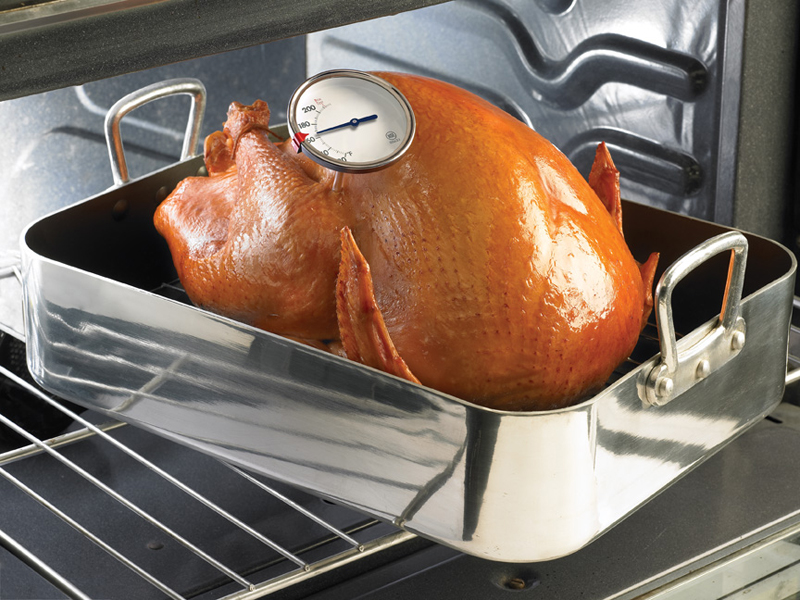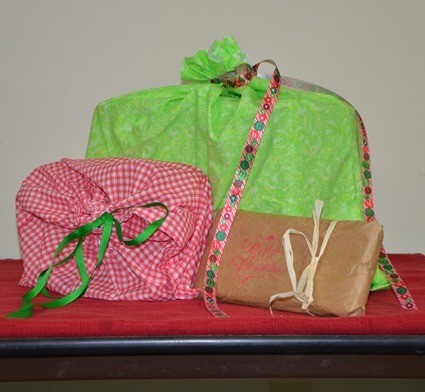by Dorothy C. Lee | Nov 27, 2015
 It’s the season to be jolly, but for many of us it’s the season to be overstressed as well. If getting ready for the Holidays is beginning to feel like a full-time job, start rethinking your holiday plans and consider streamlining, or even scaling back, some of your activities.
It’s the season to be jolly, but for many of us it’s the season to be overstressed as well. If getting ready for the Holidays is beginning to feel like a full-time job, start rethinking your holiday plans and consider streamlining, or even scaling back, some of your activities.
Following are some holiday survival tips that can help you save time and money, and preserve the holiday spirit in your heart.
- A few shopping strategies can help you save time and reduce the hustle-bustle stress. Shop early in the month and early in the day.
- Take advantage of free gift boxes and free or low-cost wrapping services. Wrapping presents can take as much time as shopping for them.
- Shop online and have the company wrap and ship gifts directly to recipients. Make sure you are shopping on a secure site. Look for the padlock icon.
- Simplify gift giving by choosing a theme. For example, buy a book or a sweater for everyone on your list.
- Suggest exchanging cards instead of gifts at the office.
- To keep packages sorted, wrap all of each person’s gifts in the same wrapping paper color or pattern.
- Instead of exchanging gifts with a friend you haven’t seen in a while, suggest a Dutch treat lunch date at a nice restaurant.
- Call a family meeting or, if family members are distant, arrange a conference call, or a mass text or email to discuss gift giving. You are probably not the only one who wants or needs to scale back on gifts. Strategies to discuss include drawing names so each individual buys a gift for only one person; giving family gifts; or giving gifts only to the children.
- Establish a spending limit and stick to it. If your holiday cash is limited, make gifts well in advance or think of creative ways to give of your time AFTER the holidays.
- Simplify your plans. You don’t need to decorate every room in your house or give gifts to everyone who sends you one.
- Reduce your entertaining requirements. Plan a themed potluck instead of dinner parties for which you are responsible for all the food. The same goes for family get-togethers. Ask each participant to contribute a dish for the meal.
- Keep your priorities straight: take time to think about what is really important to you; be realistic about how much you can do; don’t be afraid to say no.
- Setting priorities will help keep your schedule manageable. Draft a schedule that includes all the tasks you have to complete, how long you think each task will take, and when each needs to be done.
Most importantly, enjoy the holidays!
For further information contact:
Dorothy C. Lee, C.F.C.S.
UF/IFAS Extension Escambia County
3740 Stefani Road
Cantonment, FL 32533-7792
(850) 475-5230
dclee@ufl.edu
For additional information, go to the University of Florida Solutions for Your Life website, http://www.SolutionsForYourLife.com

by Judy Corbus | Nov 27, 2015
 Have questions about safely preparing your holiday meal? Refer to this quick reference for answers to common questions this time of year:
Have questions about safely preparing your holiday meal? Refer to this quick reference for answers to common questions this time of year:
Q. Approximately how long should you allow for thawing a frozen turkey in the refrigerator?
A. 24 hours per each 4 – 5 pounds of turkey. In it’s original wrapper, place the frozen bird in the refrigerator (40˚F or below). To prevent cross contamination, be sure to place the turkey in a container. A thawed turkey can remain in the refrigerator for 1 – 2 days.
Q. How long should I cook the turkey?
A.
COOKING TIME – UNSTUFFED
Size of Turkey Estimated Time to Reach 165˚F
8 – 12 pounds 2 ¾ – 3 hours
12 – 14 pounds 3 – 3¾ hours
14 – 18 pounds 3 ¾ – 4 ¼ hours
18 – 20 pounds 4 ¼ – 4 ½ hours
20 – 24 pounds 4 ½ – 5 hours
COOKING TIME – STUFFED
Size of Turkey Estimated Time to Reach 165˚F
8 – 12 pounds 3 – 3 ½ hours
12 – 14 pounds 3 ½ – 4 hours
14 – 18 pounds 4 – 4 ¼ hours
18 – 20 pounds 4¼ – 4 ¾ hours
20 – 24 pounds 4 ¾ – 5 ¼ hours
Q. What is a safe internal temperature for cooking a whole turkey?
A. 165˚F. Use a food thermometer to check the internal temperature of the turkey. Insert the thermometer in the innermost part of the thigh and wing and the thickest part of the breast, making sure not to touch the bone. All turkey meat, including any that remains pink, is safe to eat as soon as all parts reach at least 165˚F. Let the turkey stand 20 minutes after removing from the oven. Remove any stuffing and carve the turkey.
Q. What is the recommended temperature for stuffing?
A. 165˚F. The stuffing should reach 165˚F whether cooked inside the bird or in a separate dish.
Q. I want to stuff the turkey. How do I do this safely?
A.
1. Cook any raw meat, poultry, or shellfish you plan to use before stuffing the turkey. Do not mix wet and dry ingredients until just before stuffing the turkey cavity; wet ingredients can be prepared ahead of time and refrigerated.
2. Spoon stuffing directly into the cavity right after preparation. Stuff loosely – plan for ¾ cup of stuffing per pound. The stuffing should be moist, not dry – bacteria is destroyed more quickly by heat in a moist environment. Do NOT stuff turkeys to be grilled, smoked, fried, or microwaved.
3. Cook the turkey immediately in an oven no lower than 325˚F.
4. Use a food thermometer to make sure the temperature of the turkey AND the center of the stuffing have reached a safe minimum internal temperature of 165˚F.
5. Let the cooked turkey rest for 20 minutes before removing the stuffing and carving.
Q. How long can I keep leftovers?
A. Refrigerate all leftovers within two hours after cooking. Divide cooked foods into shallow containers; this allows the center of the food to cool more quickly and evenly. Use within 3-4 days or freeze for longer storage. Be sure to reheat hot foods to at least 165˚F; sauces, soups, and gravies should be heated to a rolling boil.
For more information about holiday foods and food safety (in English and Spanish), call: USDA Meat and Poultry Hotline, 1-888-MPHotline (1-888-674-6854) www.fsis.usda.gov
Source: Avoid Guessing About Holiday Food Safety, University of Nebraska-Lincoln Extension.

by Shelley Swenson | Nov 25, 2015

Green Gift Giving
The holiday season will soon be upon us. A “Green“ Holiday focuses on finding ways to reduce consumption by using renewable resources and reusing or repurposing objects. Practicing these principles can fit in line with holiday celebrations, making it a time of sustaining traditions as well as helping the environment. Here are some fun ideas for “greening“ your holiday season when it comes to wrapping gifts.
It is not about sacrifice; it is about an opportunity to…..
- Wrap gifts with brown paper bags, newspaper, or reused wrapping paper.
- Create personal wrapping paper with stamps or collages, or drawing on paper bags.
- Avoid wrapping altogether and tie a large bow around an item instead.
- Make the wrapping part of the gift such as using reusable tins, planting pots, or new towels.
- Give presents or gift certificates from local businesses.
- Focus on homemade or non-traditional gifts such as baked goods, plants, fishing licenses, dance classes, travel mugs, local art, or battery chargers.
- If giving appliances or electronics, make sure they are Energy Star-certified.
- Make donations in someone’s name to charities or conservation organizations. Investigate to see if any organization in the area is offering an alternative giving holiday festival.
- Give “time”. Help an older relative with difficult chores or take children to a park.
- Teach someone a skill or talent you have.
Investing time and creativity into the holiday can help make it more fulfilling and meaningful for you, your family, and your friends.
by Angela Hinkle | Oct 30, 2015

Family Meal
When I was a kid a million years ago, my family had dinners together. Most meal times were good. I was where I was supposed to be and felt safe, important, and loved. Other meals were not so great. I specifically remember being forced to eat at least one lima bean for which much drama was executed on my part. These days, I love being able to eat dinner with my daughter. When we eat together, we’re happier and healthier, especially if we have fun things to laugh about while we eat.

FCS Dining In Day December 3rd
The payoff comes in benefits for both of us. A variety of research has shown that when we eat meals together as a family we feel closer and we eat more nutritiously. When families have meals together, it gives them the chance to catch up on what is happening in their day. There is also the chance to learn table manners, and some basic cooking skills.
For a quality meal time experience, let every member of the family help make some part of the meal – which can help develop food preparation skills – or try taking turns cooking and cleaning. Make new rituals and share traditions so everyone knows they belong to a special group. Teach youth about their heritage by serving and talking about a favorite family recipe. Offer healthy food choices (they’ll be more willing to choose these foods as they grow). And be sure to have light, easy conversations. Save difficult conversations for another time.
To help you kick start your family meal together this year, commit to “Dining In” on Family & Consumer Sciences Day, December 3, 2015. http://www.aafcs.org/FCSday/. Then add on another family meal, then another, until quality meal times become a healthy part of your family.
by Shelley Swenson | Oct 30, 2015

Holiday Spending
The holiday season will soon be upon us. It seems to begin earlier each year placing more stress on both retailers and consumers. Retailers struggle to sell more products while consumers are subjected to a bombardment of messages via ads and media to encourage us to buy more! Through careful planning, the journey can be more emotionally and financially stable.
It is not about sacrifice; it is about opportunity to…..
- Make the commitment to be debt free from holiday expenses on January 1, 2016 through good planning.
- Create a spending plan and log each expense. Use cash and/or debit cards when at all possible. Money coming directly out of your pocket will likely make you think harder about your purchase.
- Stay motivated by finding a support system of people who have similar goals. Share your vision and ask for assistance and support.
- Think of ways to find alternatives to pricey presents. Holidays are about spending time with family and loved ones so don’t let gifts be the focus of your holidays or break your holiday budget.
- Track and assess your spending. Recommit daily to being debt free on January 1, 2016 from holiday expenses.
- Learn more about this subject with worksheets to assist with your planning at https://edis.ifas.ufl.edu/pdffiles/FY/FY140500.pdf FCS5267
by Angela Hinkle | Oct 28, 2015

Happy Child with Peanut Butter Sandwich
November in the Panhandle of Florida. Time for pumpkins, cooler weather, hay rides, football games, harvesting cotton and peanuts, and of course, Thanksgiving. It’s also time for the annual Peanut Butter Challenge! We gather peanut butter to give to those who could use a little help feeding their families. Why peanut butter? It is the most requested item in food pantries, it’s shelf stable – you don’t have to heat it up or keep it cold, people like it – a lot, it’s economical – especially if it’s a buy-one-get-one-free (BOGO), it’s local – peanuts are the biggest crop in the Florida panhandle, and it’s healthy – a great source of plant-based protein.
So what about Jane? Jane’s been a consistent contributor to the Peanut Butter Challenge every year. This may not seem like a very big deal, but you see, Jane is allergic to peanut butter. This may not seem like such a big deal either, but to me, it’s like giving time to help out the blood drive even though you can’t give blood, walking in Relay for Life to show support for cancer research though you have no money to give, giving money to a charity because you have it and it feels like the right thing to do.
So whether you give because of your competitive spirit – “my group can give more than theirs”, you have a couple extra dollars and there is a BOGO, because it makes you feel good knowing how much the receiving families appreciate it, or you just feel like it’s the right thing to do, please give to the Peanut Butter Challenge.
And be thankful – for peanut butter … and Jane.
To find out more about the Peanut Butter Challenge or how you can give by November 25, please contact your local UF/IFAS Extension County office in the Northwest District UF/IFAS Extension Office.
 It’s the season to be jolly, but for many of us it’s the season to be overstressed as well. If getting ready for the Holidays is beginning to feel like a full-time job, start rethinking your holiday plans and consider streamlining, or even scaling back, some of your activities.
It’s the season to be jolly, but for many of us it’s the season to be overstressed as well. If getting ready for the Holidays is beginning to feel like a full-time job, start rethinking your holiday plans and consider streamlining, or even scaling back, some of your activities.







